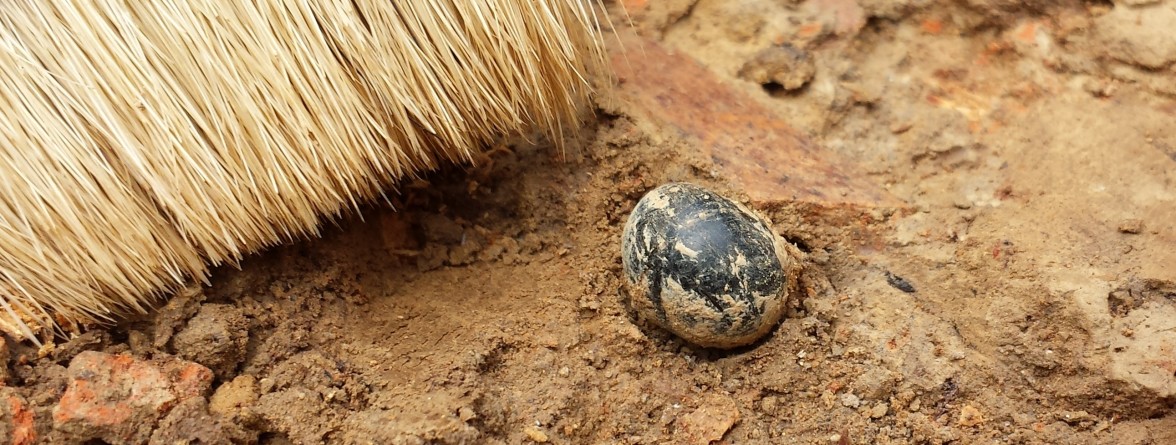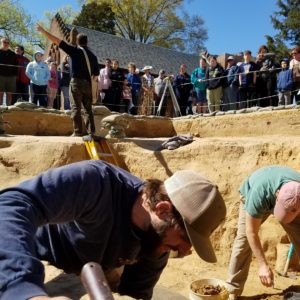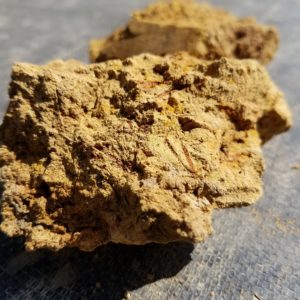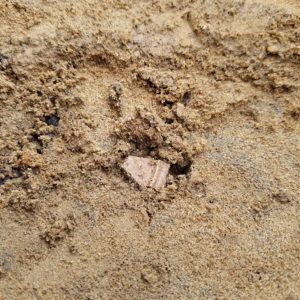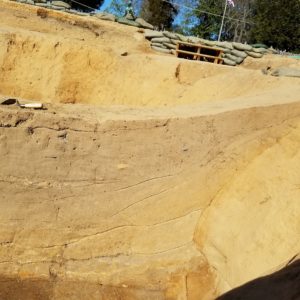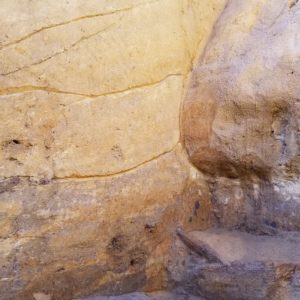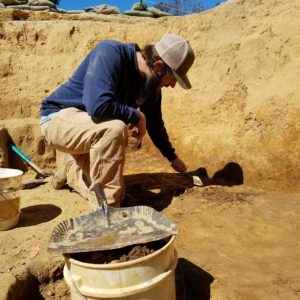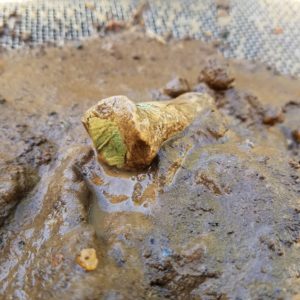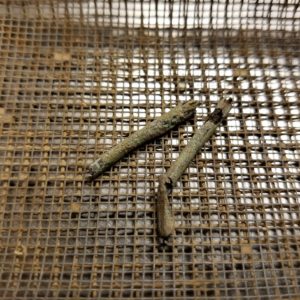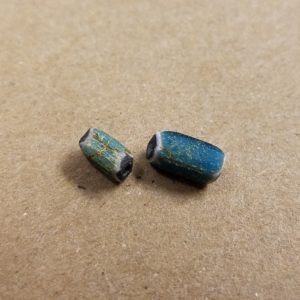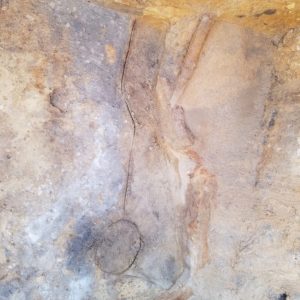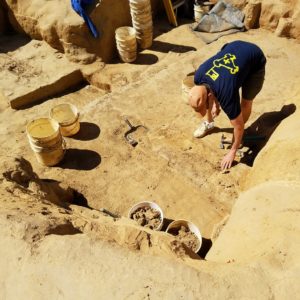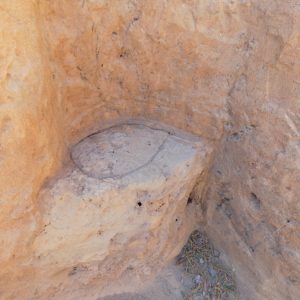At the end of March, the archaeology team returned to the field and focused their efforts excavating the cellar of Structure 193, located at the northeast corner of the 1608 Fort extension. When the 2015 field season ended, over 3/4ths of the cellar had been excavated. Since resuming excavations two weeks ago, the remaining trash layers have been excavated and the entire north wall has been exposed. Approximately 14 feet long, the north wall exhibits less erosion than the cellar’s east wall and most of the south wall.
“Now that all the trash layers have been removed, one really gets a sense of the enormity of this cellar,” said Senior Staff Archaeologist Danny Schmidt. “It may be the largest cellar dating to the early period of James Fort that we have ever excavated.”
In contrast to three otherwise comparable cellars, the team found no evidence of steps carved into the subsoil walls leading into the lower chamber. The three cellars with carved clay steps include the Kitchen cellar (Structure 191) and the Blacksmith Shop/Bakery (Structure 183), both within the 1607 Fort, and Factory cellar (Structure 165) in the 1608 Fort extension. Like the method used in the First Well (Structure 185) cellar located in the Fort’s center, a wooden ladder was probably used to access Structure 193’s cellar. And, not surprisingly, that’s how the team enters and exits Structure 193’s cellar while working on it today.
Early 17th-century artifacts recently recovered from the trash layers include: Native pottery; coral; copper aglets; copper upholstery tacks; and Nueva Cadiz beads. An important glass “doublet” button also was found. Most men at James Fort wore a doublet or jerkin over their shirts; these garments were fastened in front with laces, or with buttons like the one from this feature. Curator Merry Outlaw noted that “although the majority of buttons recovered from James Fort features are made of copper alloy, over 60 black glass buttons with iron wire eyes also have been recovered.” Since glass beads from early James Fort contexts were made in Venice, Italy, it was believed the glass buttons were probably made there, too. Recent analysis of several examples by Karlis Karklins of the Society of Bead Researchers in Ontario, Canada, and his fellow researchers in Bamburg, Germany, however, has proven that they originated in the Fichtelgebirge region of Bavaria.
During April the team will focus on excavating and recording post molds found along and cut into the cellar’s walls. They seal a clay and loam layer that appears to relate to the floor being raised at some point during the cellar’s use. Based on its location at the northeast corner of 1608 James Fort, it is hypothesized that the building initially served a military function. Those in the building retrieved drinking water from a square well located in its east chamber. However, the cellar served a second function after the water spoiled and the well was filled. The team plans to begin excavating the well by the end April, and to finish before the arrival of the 2016 Jamestown Field School students in late May.
Check out the dig update video, featuring Archaeologist Danny Schmidt, on the opening day of the field season.
related images
- Bob Chartrand and Don Warmke work on removing the bottom trash layer from the cellar’s north side, while Dave Givens gives an archaeology tour to our visitors.
- Clay with reed and grass impressions that was likely the walls for this structure that would have stood above the cellar.
- A small fragment of a German stoneware Bartmann jug in situ.
- The west profile showing the different trash layers filling the cellar that were excavated over the last couple of years.
- A shot showing the north wall of the cellar and erosion.
- Bob Chartrand trowels the bottom of the cellar next to the north wall, newly exposed.
- A handful of artifacts found in one of the screens: pieces of glass, bone, a small mammal tooth, chalk, an iron nail fragment, and small sherds of Frechen stoneware and North Devon.
- Neck and handle sherd of a costrel made in Liguria, Italy to contain olive oil.
- A glass doublet button right after discovery.
- Copper aglets used for ending laces to keep them from fraying.
- Two Nueva Cadiz beads intended for use in trade with the Virginia Indians.
- A postmold in the northeast corner of the cellar, sealing the clay and loam layer. Notice the erosion along the north wall.
- Don Warmke finishes excavating the last section of soil on the cellar’s north side.
- The newly uncovered postmold in the cellar’s northwest corner.


